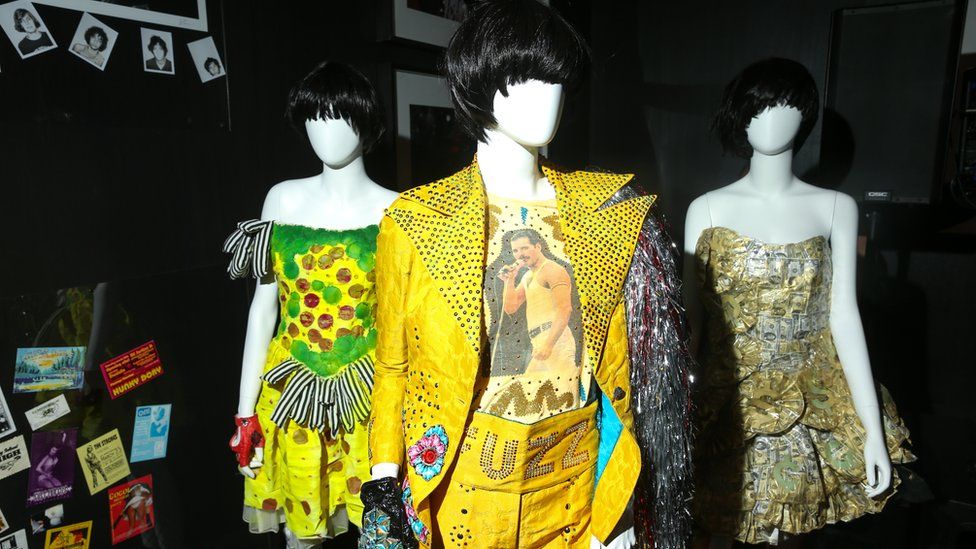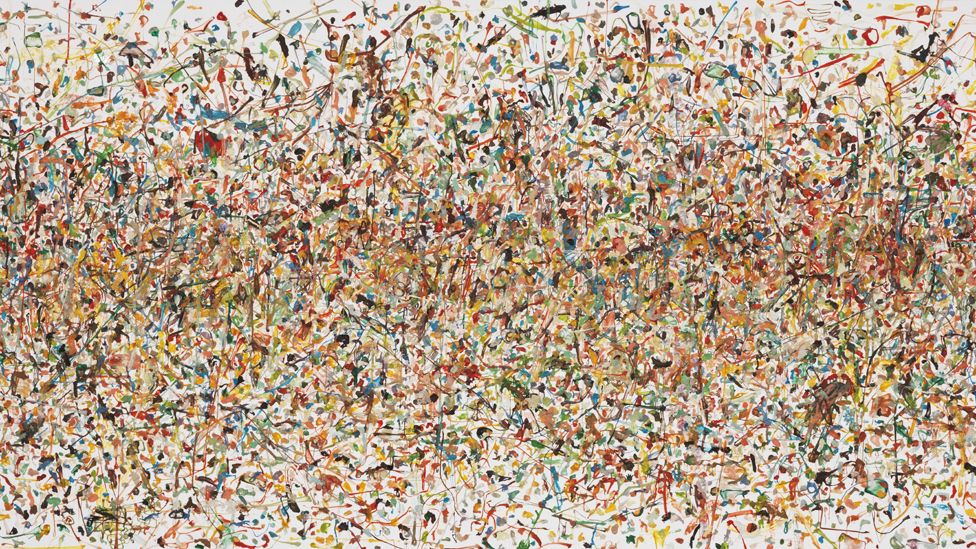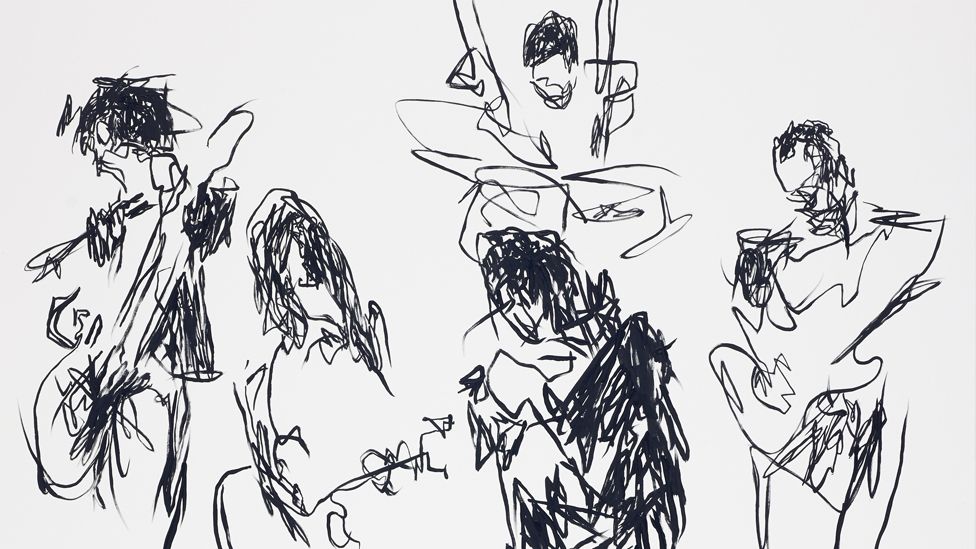
“I just wanted to be one of The Strokes,” croons Alex Turner in the opening line of the Arctic Monkeys’ latest album.
He wasn’t the only one.
The skinny-jeaned New Yorkers spearheaded the last big-selling local music scene (only London grime has come close since) as themselves and bands like Yeah Yeah Yeahs, Interpol and LCD Soundsystem transported their early noughties sound from Manhattan dive bars to arenas and record shops around the world.
Now a new art installation is bringing the influential scene back to life, in all its filthy glory.
Meet Me in the Bathroom: The Art Show is based on Lizzy Goodman’s 2017 book of the same name, which contained first-hand and often contradictory accounts of the frenetic post-punk revival during a period of great social upheaval for the city.
Goodman, a friend of Strokes guitarist Nick Valensi since their teens, talks the BBC through the show and why the era still means so much to so many.
‘Freedom to misbehave’

The exhibition is located in The Hole gallery in the Bowery district of Manhattan, fittingly opposite where the famous CBGB punk club once stood.
Its aim is to replicate “a disgusting super gnarly dive bar on Second Avenue, with famously foul toilets,” where the city’s young bands, artists and creative types would hang out.
The celebration of these “outposts for strangeness” and “safe spaces for pursuing debauchery” was integral to the project.
“I think capturing that is the essence of what we’re trying to do here,” says Goodman, “Creating a space where you can recall the freedom to really misbehave, for better or for worse, in an oddly safe place.”
The Strokes and their contemporaries built their reputations playing such venues at a time when music download technology was still in its infancy and social media was barely a glint in Tom from Myspace’s eye.
Looking back on it now, the journalist-turned-curator believes they were unwittingly part of the last generation of young people free from the “eternally documenting eye in the sky.”

“There wasn’t this sense of being seen all the time and I think that’s part of the reason the show connects,” she adds.
“A lot of those bands had a lot of ambition but not a whole lot of expectation and were then catapulted to this level of underground fame. No-one became The Rolling Stones or Coldplay but they did very well and that was unexpected.
“But there’s also the second layer of this, which is now everyone’s being watched all the time. We’re watching ourselves – I tell a story about my day every day on Instagram – and this was an era when that was so far from the realm of possibility that there was a special kind of freedom that existed.”
Goodman is interested in seeing how kids in bands today are “incorporating that sense of cultural, big brother into the work that they make,” to similarly document their own era.
‘The power of ugliness’

After film director and curator Hala Matar had persuaded Goodman to turn her words into art, the main object of her heart’s desire was to acquire the What’s Eating Karen O Dress, designed by Christian Joy for the eccentric Yeah Yeah Yeahs frontwoman.
The acid green “reformed prom dress” is, according to Goodman, “pretty hideous in this really extraordinary arresting way,” and symbolic of the fresh defiance of the city, which for years had been told punk was long gone.
“There’s this sense of the power of ugliness, fear, darkness and discomfort being heralded as on a par with all the other flavours of power you’re seeking when you’re making art,” she explains.
“One flavour of power is beauty and one is strength. Like Beyonce’s hair blowing in a stage fan is a sort of expression of power and it’s beautiful because it feels strong and it’s arresting.

“But that’s only part of the palette of what you’re supposed to paint with, and challenging what we expect to see on stage with your physical appearance – showing sadness, ugliness and discomfort – those are also really important tools towards the end goal of making people feel something.”
Goodman remembers witnessing Karen O douse herself in oil and spit beer all over the Mercury Lounge stage in front of just a handful of people, en route to “inventing a persona that would then connect with millions.”
“The idea of a young female rock star with her equally talented young female friend [Joy] pursuing ugliness intentionally as part of the platform of what they’re getting at is just really cool to me.”
A sense of urgency brought on by 9/11

The Strokes’ seminal debut album, Is This It, arrived just months before the 9/11 attacks which killed thousands of people and would go on to shape the narrative of 21st century world politics.
The event provided a “violent, destructive and traumatic” backdrop to all that followed.
“These are bands formed by kids in one era, and then in the beginning of their early youth realised in a very dramatic fashion that they were going to die and that everyone around them was going to die and their city could be smouldering,” notes Goodman.
“It was kind of inspiring in its sense of destruction… ‘I’m going to go out seven nights a week, not five nights a week’ and also in the sense of ‘I don’t have as much time as I thought so I’m not going to sit around for the next five years, half-ass playing in my band and working at the coffee shop. I’m going to stay up until dawn every single night with my friends trying to make this record.'”

“‘And I’m also going to go to Bar 13 and dance and drink, as Karen O says in the book, like, 20 cosmopolitans and do knee slides on the bar all night because why not?'”
She hopes to adapt the show, made possible with the help of UTA Artist Space, and bring it to the UK and beyond soon.
“The idea is how do we put this energy in a bottle and bring it to other places, so that it feels authentic to those places?”
Meet Me in the Bathroom: The Art Show runs until 22 September.